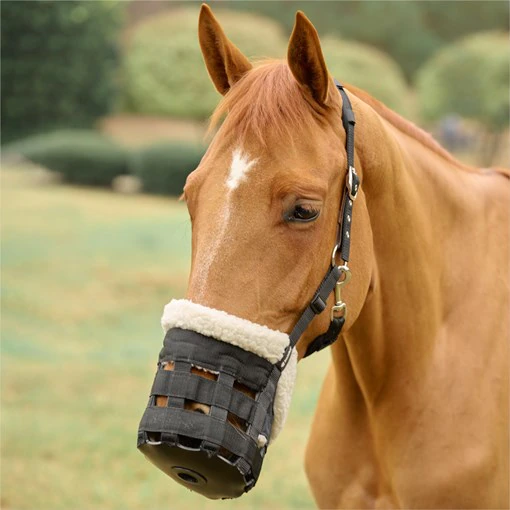Sorry this is going to be long lol, I recently purchased a 4 yr old warmblood gelding and afterwards found out the hard way that he seems to have some metabolic issues. His previous owners told me he lived out 24/7 in a group on grass pasture. I keep my horses at home, pasture from about 5 am to 8 pm and stalled overnight. Long story short after being at home for a couple of weeks he had a mild laminitic episode (no significant changes on X-rays and totally sound after 1 day of bute and coming off the pasture). His insulin levels were extremely high, the vet commented that she has never seen such high insulin levels in a young healthy horse. She is going to send a blood sample to the vet college to be run there as well to double check. Perhaps the grass at my place is higher in sugars than his previous home, he did not previously wear a muzzle or have any issues according to original owners. The only thing he was getting at my place other than pasture is netted grass hay in the stall at night, 2 cups soaked (2 cups after soaking) beet pulp with a scoop of ration balancer. And of course the occasional treat. At this point we are not totally sure what caused this, other than he maybe has EMS and he was always running really high insulin with the old owner just never quite bad enough to cause laminitis. Or something else? He could not have gotten into any feed bins or anything like that. Once the second blood test comes back from the lab I’m hoping to have a more definitive answer, it is my understanding the insulin will always run higher than normal if it is EMS? None of the other 6 horses have ever had any issues here, 3 are ottbs and 3 warmbloods ranging from 2-9 yrs old.
In the mean time here is what I am doing with him and my concerns/questions.
Turn out alone with grazing muzzle 5am-10am
I understand this to be the best time of day as far as sugars in the grass. I feel bad he doesn’t have his friends ( they promptly ripped off his grazing muzzle when I attempted group turnout) he can see them and seems unbothered to be on his own. I hate how much time he spends in his stall. Would overnight turnout be a better idea? Maybe depending on what the insulin results are? What would you do in the fall/early winter when the mornings are frosty? At what point in the fall/winter is the “dead” grass safe to be on?
I don’t have a dry lot, we rent our farm and I don’t know how happy the owners would be to create one. If we were to try that how does one go about it? Going from grass to dirt I mean, I was thinking rototill but then wouldn’t they still just dig through and eat the grass? This is probably a non issue lol Boarding out is not an option, I am kind of in the middle of nowhere and just don’t have the time to go elsewhere to ride him on top of work and maintaining the rest of the horses at home.
He gets netted Timothy hay all day inside with a buddy (alternating buddies daily) he is still getting a small amount of soaked beet pulp, no ration balancer just a multivitamin/mineral supplement. How do you ensure these horses have adequate nutrition to build muscle and have energy to work, build topline etc? He has already dropped quite a bit of weight in the last couple weeks and once back to work I don’t know how to maintain him safely. I have seen feeds marketed towards IR horses etc, but it just seems like if moving from one huge grass pasture to another is enough to trigger it then I would be terrified of feeding any grain.
Treats? What can they have? I don’t train with treats but I always like to give them something when catching from outside or the stall and after a ride, getting into the trailer etc. what are some good items or brand of treats for these guys? (I live in northern Alberta Canada and mostly order everything online from tack shops- feed store has limited options and no low sugar treats)
I’m sure I am forgetting a few things and probably some important details to the story lol, my brain is fried because I have been obsessing and stressing over all this for the past few weeks. Thanks for any ideas, suggestions, experiences etc.



 I was using the Proform Step 7 ration balancer. I pulled him off because I saw molasses in the ingredients and panicked lol to be totally honest
I was using the Proform Step 7 ration balancer. I pulled him off because I saw molasses in the ingredients and panicked lol to be totally honest